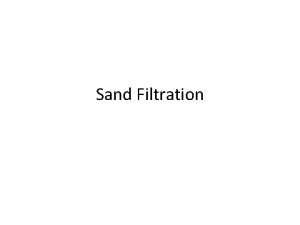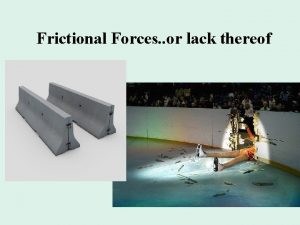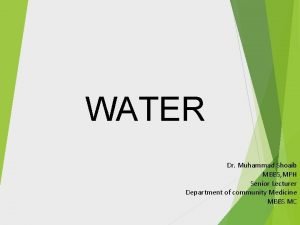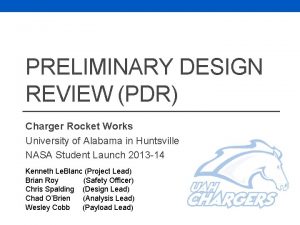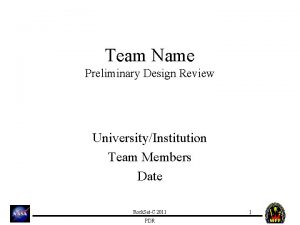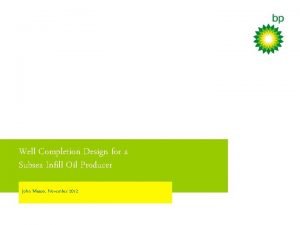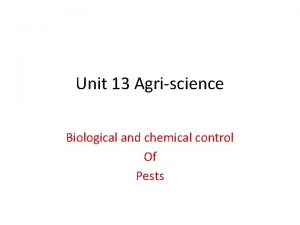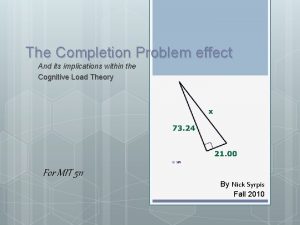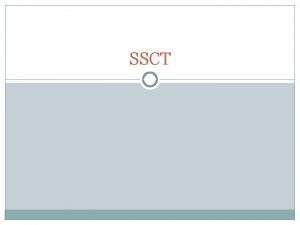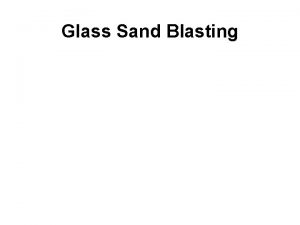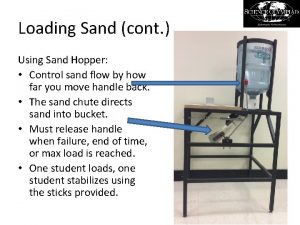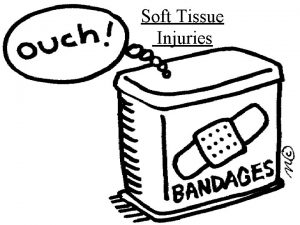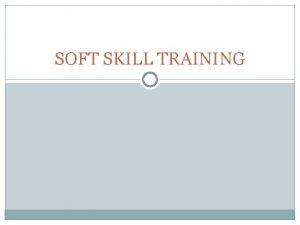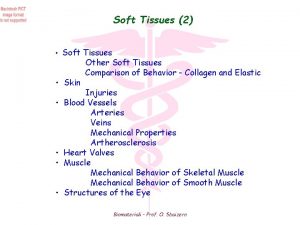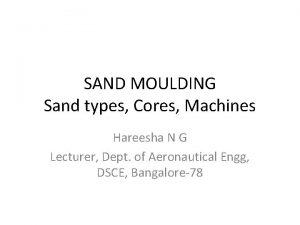Preliminary Review Soft Sand Completion Practices A Preliminary

















- Slides: 17

Preliminary Review: - Soft Sand Completion Practices A Preliminary Review of Completion Practices in Soft (Unconsolidated) Sandstone Formations - Public Domain and JIP Information Bjarni Palsson, Stavros Kastrinakis

General Items for Discussion ñ General Completion Options for Water Injectors ñ Completion Guidelines for Water Injectors ñ Morita et al. , paper SPE 39436 ñ Objective: Best Practices Document

Completion Methods for Water Injection Wells (General) ñ Gravel / frac-packing ñ Open hole with a screen or a pre-packed screen ñ Cemented + perforated casing/liner with a propped hydraulic or thermally induced fracture ñ Selective perforation ñ Open hole (barefoot)

Soft Sand Completion Issues ñWhat is a Soft Sand (Definition) ñFormation Failure Mechanism ñCompletion Design Criteria ñCompletion Field Experience

What is Soft Sand? (Definition) ñScreening criteria (Tony Settari): ñLow unconfined compressive stress (UCS) ñLow Young’s modulus (E) ñPoro-plastic compressive behaviour (low cohesion) ñPoor core integrity and wash-out during lab tests ñSand production and wellbore stability problems ñStress dependent porosity and permeability ñStress Path (Heriot-Watt)

Completion Failure in Soft Sand Wells ñPerforation cavity or wellbore collapse ñHardware damage ñErosion and corrosion (during installation and operation) ñCompaction (well collapse) ñScreen plugging ñSand production ñOil and solids in injection water

Formation Failure in Soft Sand Wells Perforation Cavity Collapse ñCaused by: ñRock mechanical failure (changes in total stress and differential stress) ñChemical unstability (cementation, capillary pressure) ñDue to: ñBackflow as a stimulation treatment ñCrossflow during well shut-in (layered sands) ñPressure disturbance as a result of well shut-in (water hammer effect)

Formation Failure in Soft Sand Wells ñ Results in injectivity decline due to sand filled perforations ñMorita et al. (SPE 39436): In high permeable sand, permeability of sand filled perforations can be much lower than the initial permeability ñUp to 70% of the injection pressure drop (Pwf-Pe) occurs within the sand filled perforations ñ Sand filled perforations may be more prone to plug by solids in the injection water

Design Criteria for Injection Well Completion ñ In general, same rules as for production wells Injection well BHFP Injection well: Pressure charging ñ Difference: ñ Near wellbore area of injection wells is pressure charged ñ Injection wells have to withstand solids flow in two directions Reservoir pressure Production well: Pressure drawdown r Production well BHFP r

Field Experience ñPublic Domain Literature ñPWRI JIP Information ñBP Amoco: BP-1, BP-2, BP-3, BP-4, BP-5 ñNorsk Hydro: NH-1 ñPan. Canadian Petroleum: Countess field ñStatoil: Heidrun field, Snorre field ñUnconsolidated - not necessarily soft sand! ñEither fulfill “screening criteria” or ñ(Very) high permeability

Formation Failure after well Shut-in (Water Hammer Effect) ñStatoil: Heidrun Field (PWRI JIP) ñHighly unconsolidated formation ñInjection wells completed without sand control ñSharp injectivity decline linked to emergency shut-ins ñ“Liquefied” sand believed to fill the wellbore above perforations ñPossible remedial actions ñSand control ñEliminate water hammer effects

Formation Failure after well Shut-in (Water Hammer Effect) ñPetrobras: Marlim Field (SPE 53789) ñProduction wells and horizontal injection wells completed with sand screens ñDeviated injection wells without sand control ñSand production associated with shut-ins (WHE) ñ“Solved” with retainer valves above perforations

Performance of Pre-Packed Screens ñSuccessful applications ñBP Amoco: Harding Field (SPE 48977) ñPetrobras: Marlim (SPE 53789) ñBP-3 and BP-4 (PWRI JIP) ñSun Oil Britain: Balmoral field (SPE) ñWilmington field, California (SPE 1543) ñPre-packed screens the best sand control ñBut still sand production - Gravel size too high?

Comparison between Production Well and Injection Well Completion Strategies ñBP Amoco: Forties Field (SPE 6677) ñInitially both producers and injectors cemented and perforated but no sand control ñProduction wells had no sand production problems ñBut sand production in some of the injectors ñSun Oil Britain: Balmoral Field ñSimilar formation as Forties ? ? ñBoth producers and injectors (successfully) gravel packed

Issues for Discussion ñ Water Hammer Effects (WHE) ñHow and when do water hammer effects occur? ñ Retainer valves ñCan installation of retainer valves above perforations stop water hammer effects? ñ Injectors versus producers ñWhy Forties injectors have more sand production problems than the producers? ñ Corrosion and erosion problems ñNeed for corrosion protection in injection well completions and risk of debris plugging?

Issues for Discussion ñ Innovative solutions ñMechanical profile control with mandrels in water injection wells; Needham et al. (SPE 54746) ñSingle Trip Perforating and Gravel Pack System (STPP); Jones (SPE 54285) ñLow cost formation consolidation with steam injection in the Wilmington field; Davies et al. (SPE 38793) ñ Guidelines for solving sand problems in water injection wells ñMorita et al. (SPE 39436)

Issues for Discussion ñMeasurements of completion efficiency ñQ, THP, II or Skin ñPermeability-adjusted skin ñ Pahmiyer et al. (SPE 54742): ñTrend line relationship between permeability and skin
 Perbedaan rapid sand filter dan slow sand filter
Perbedaan rapid sand filter dan slow sand filter Definition frictional force
Definition frictional force Cheap casting sand
Cheap casting sand Residual chlorine
Residual chlorine Preliminary design review example
Preliminary design review example Preliminary review definition
Preliminary review definition Pdr preliminary design review
Pdr preliminary design review Preliminary design review example
Preliminary design review example Subsea well completions
Subsea well completions Agriscience unit 13 completion answers
Agriscience unit 13 completion answers Sentence completion task
Sentence completion task Completion problems
Completion problems Ssct adalah
Ssct adalah Find the missing letter from the given series?
Find the missing letter from the given series? Semantic scene completion from a single depth image
Semantic scene completion from a single depth image Texas railroad commission online query
Texas railroad commission online query Adequate planning leads to the correct completion of work
Adequate planning leads to the correct completion of work The selection structure is the completion of
The selection structure is the completion of
